
This series breaks down the combinations of sources, solutions, and data signals top dealmakers use to identify, engage, and win the right opportunities.
This formula has all the elements you need to learn how private equity firms find add-ons. Keep reading for a step-by-step tutorial on how to pinpoint timely, relevant, and proprietary add-on acquisition opportunities to expand your firm’s portfolio and augment its platform investments.
Add-on acquisitions occur when a private equity firm or other buyer acquires a business and integrates it into an existing portfolio company, also known as a platform company. Add-ons are typically smaller, early stage, and strategically selected to enhance the platform company’s value, capabilities, or growth potential.
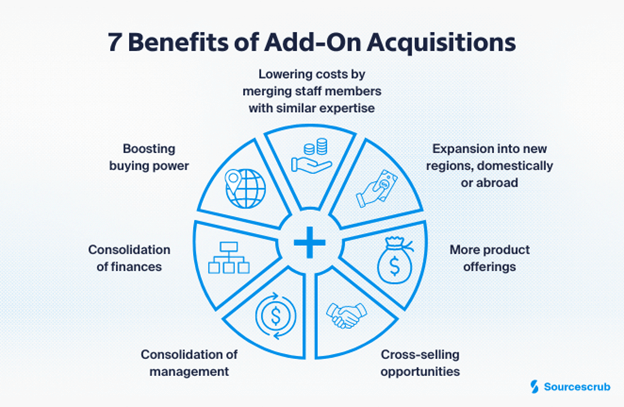
Add-ons have long been an important part of private equity firms’ playbook, but their popularity and strategic importance have increased over the last few years for several reasons. In 2021, dealmakers experienced a deal surge like never before, driving almost $6 trillion in transaction volume and 63,000+ deals. Company valuations skyrocketed along with investor optimism, leading firms to continuously exceed their hard caps and end the year with a whopping $2.3 trillion in dry powder.
Less than halfway through 2022, signs of a recession began to show, and market uncertainty took hold. Dealmakers who invested in companies at peak valuations turned to add-ons to help lower their overall entry multiples, making 2022 the biggest year for add-ons in over a decade at 76% of all US private equity-backed buyouts. Three years later, this trend remains strong as add-ons offer dealmakers a faster and less risky path to deploying the approximately $500 billion of dry powder nearing the end of its investment window.
Market uncertainties aside, increased industry fragmentation, growing owner and operator demands for domain expertise, and rapidly advancing technologies like AI have also contributed to the recent uptick in add-ons. Strategic add-ons enable dealmakers to move specialized theses forward and deepen their moats around target niches, creating a distinct competitive advantage.
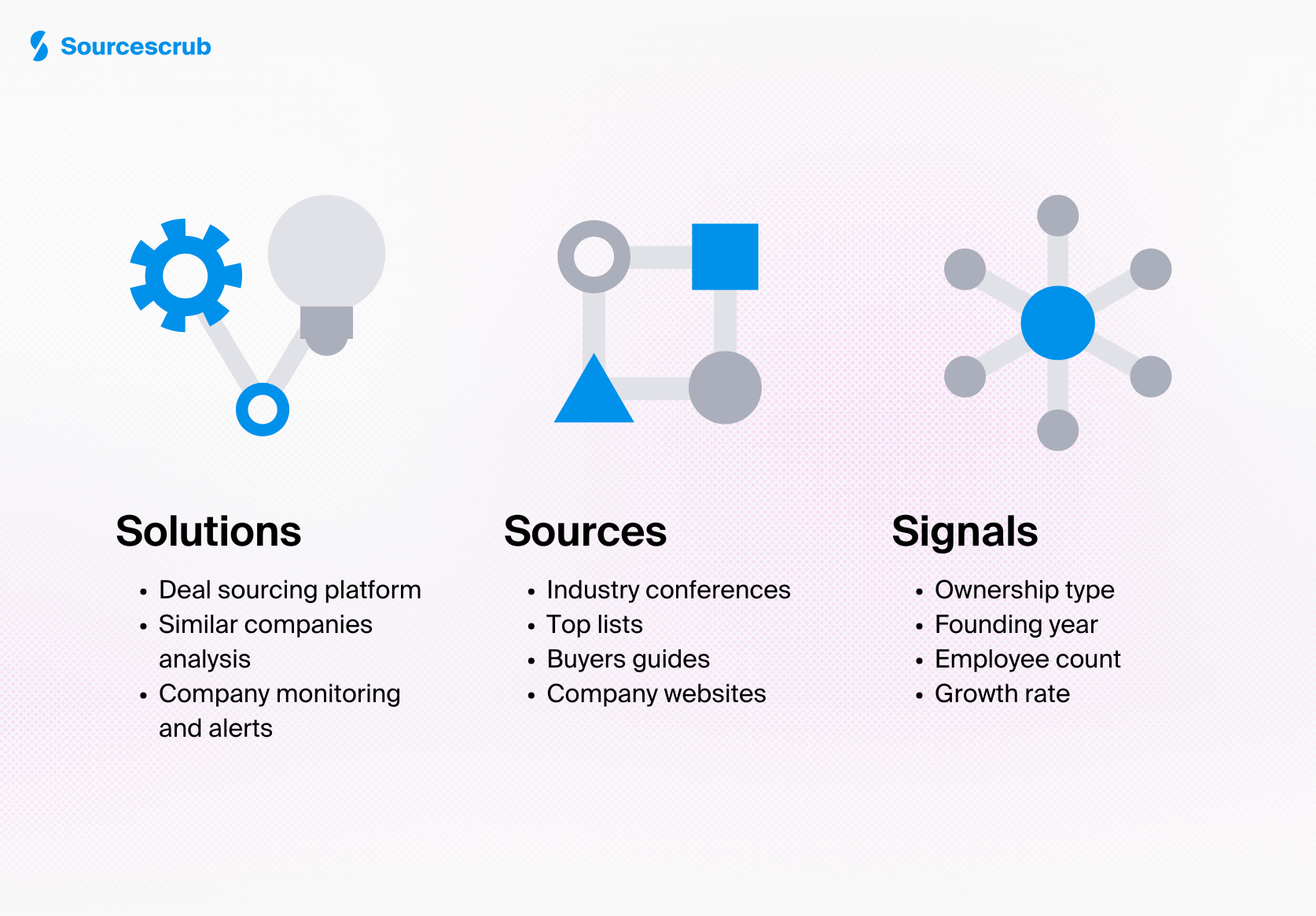
Let’s pretend our private equity firm focuses on the consumer electronics space, with a specialized interest in pet tech. We recently acquired Pawscout, a company that produces dog and cat safety tags and a corresponding tracking app to help find lost pets. Since the product has been doing so well, we are interested in identifying a tuck-in acquisition to expand Pawscout’s product offering and addressable market.
In addition to offering a similar, complementary pet safety product and/or service to Pawscout, we are searching for companies that are:
Scroll down for a detailed explanation of how to apply this formula using a deal sourcing platform like Sourcescrub.
First, use your deal sourcing platform to find companies that are similar to your chosen platform company, or in our case, Pawscout.
Sourcescrub instantly identifies companies that share sources, industries, business descriptions, and other key attributes, and then ranks them in priority order. It uses human-in-the-loop machine learning, resulting in industry-leading accuracy. All we have to do is type in Pawscout’s name, and the platform identifies a thousand similar businesses for us to explore.
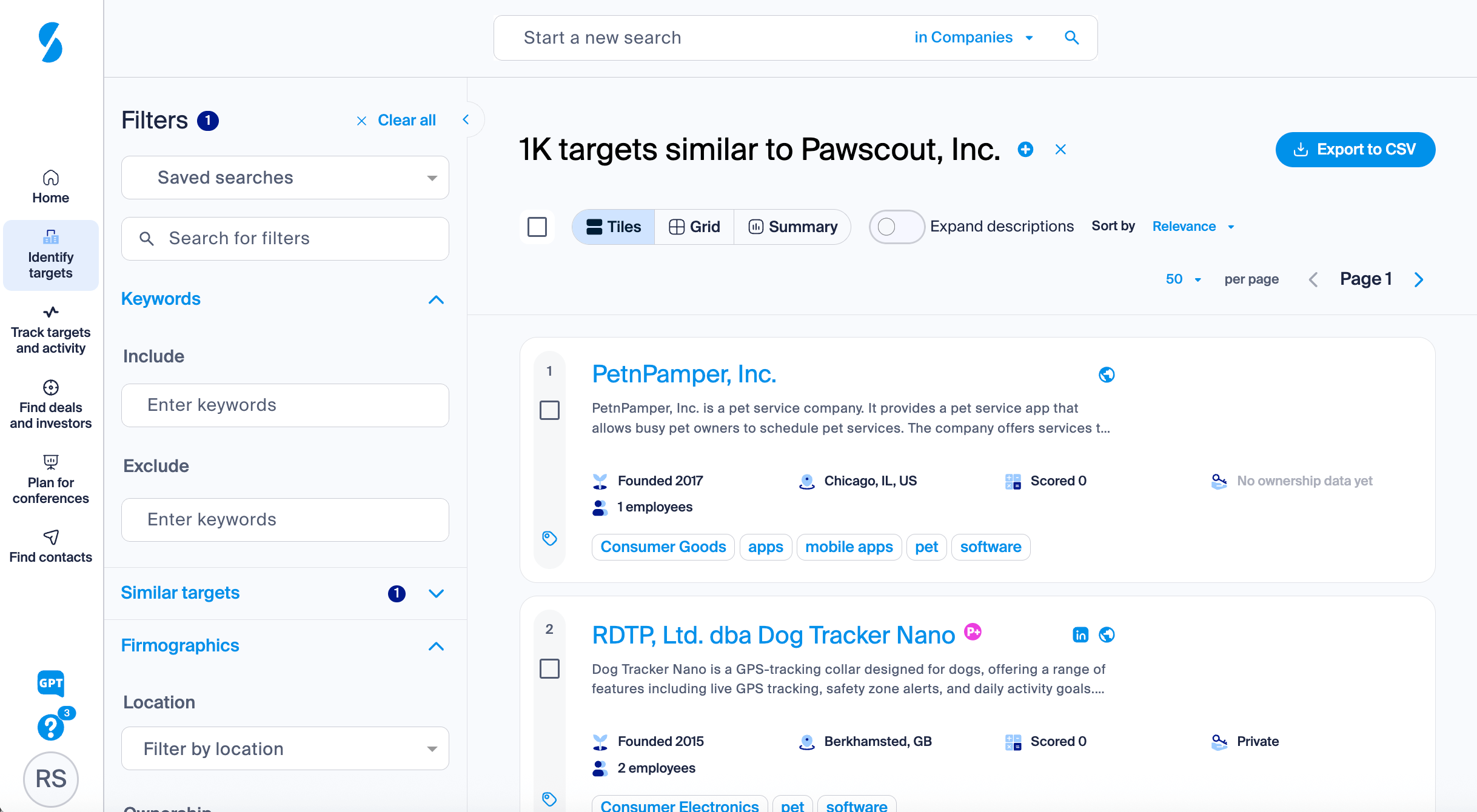
Begin narrowing down this list of similar companies by searching for keywords both within these businesses’ profiles and on their websites. We’re interested in adding on to the pet security side of Pawscout’s offering, so we will filter our results by “pet” and “safety” to eliminate similar companies that may be focused on the pet lover community aspect of Pawscout’s business.

Next, filter by location and ownership type. Remember that we are interested in founder-owned companies located in North America only.
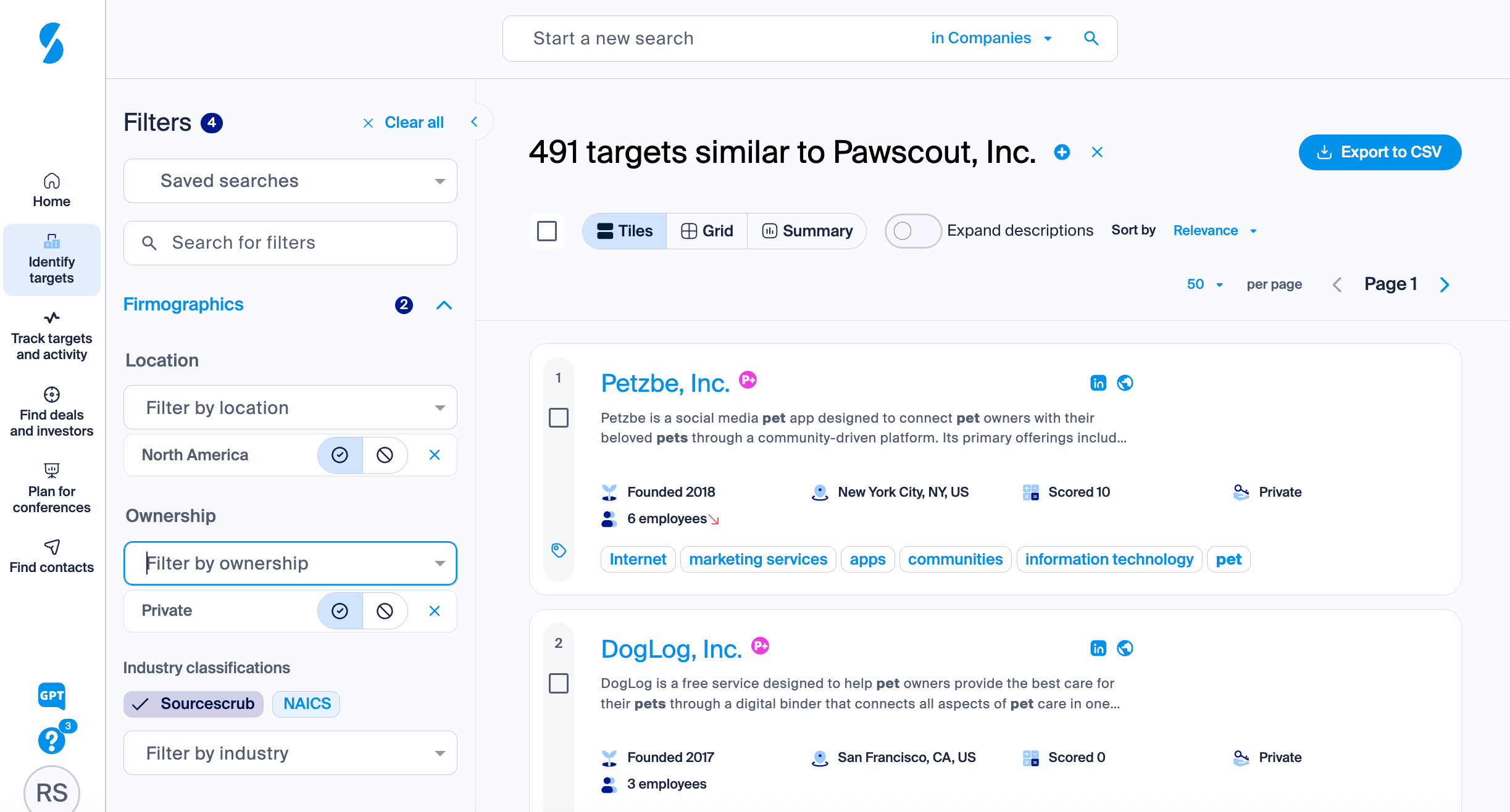
Since ideal add-ons are usually younger companies, it’s important to narrow results by founding year. For the purposes of our example, we will set the minimum founding date to 2021, and the maximum to 2024.
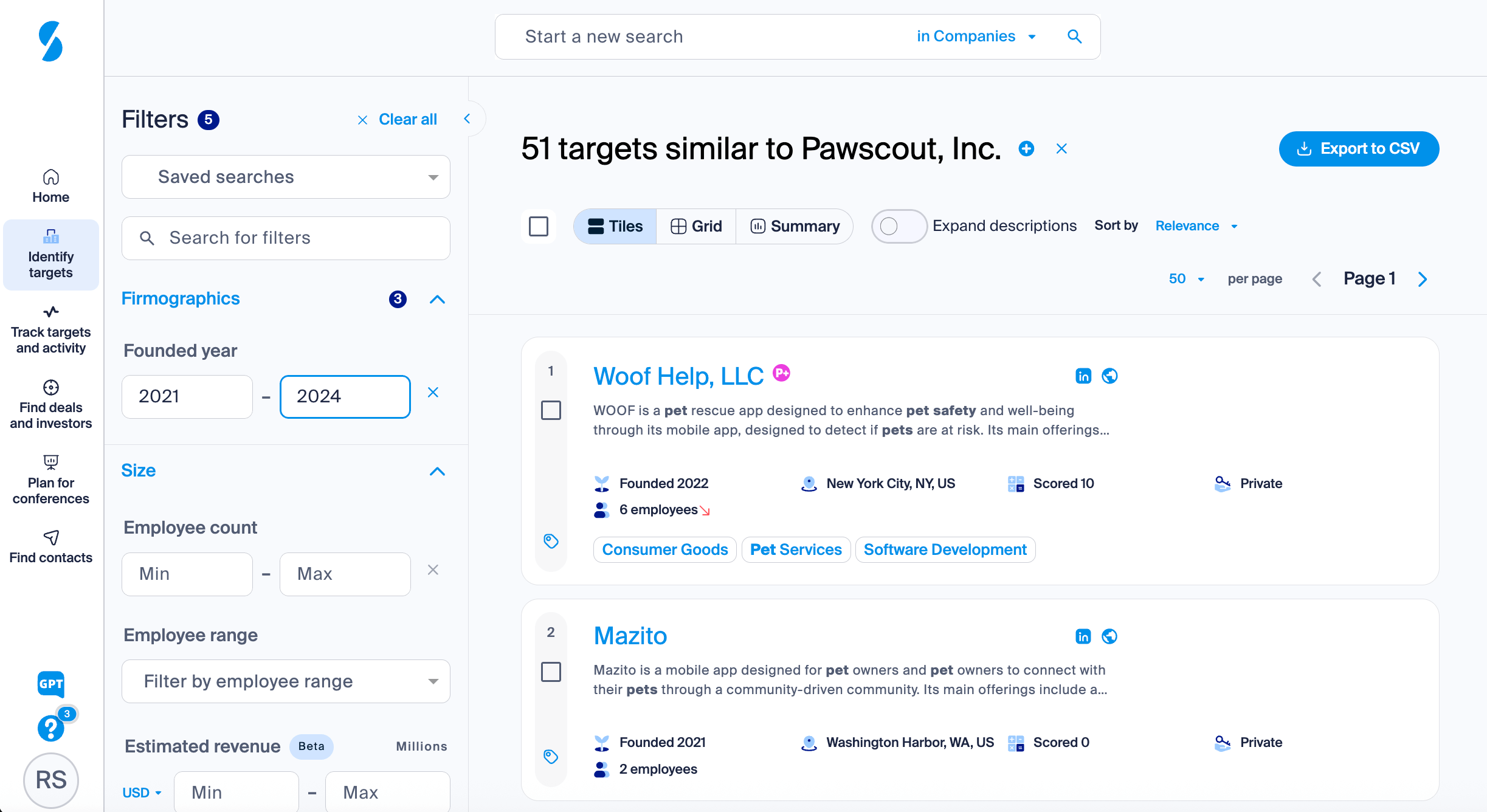
Similarly, tuck-in acquisitions tend to be on the smaller side, so defining companies’ headcount is also useful. In this case, we want businesses with between 1-11 employees.
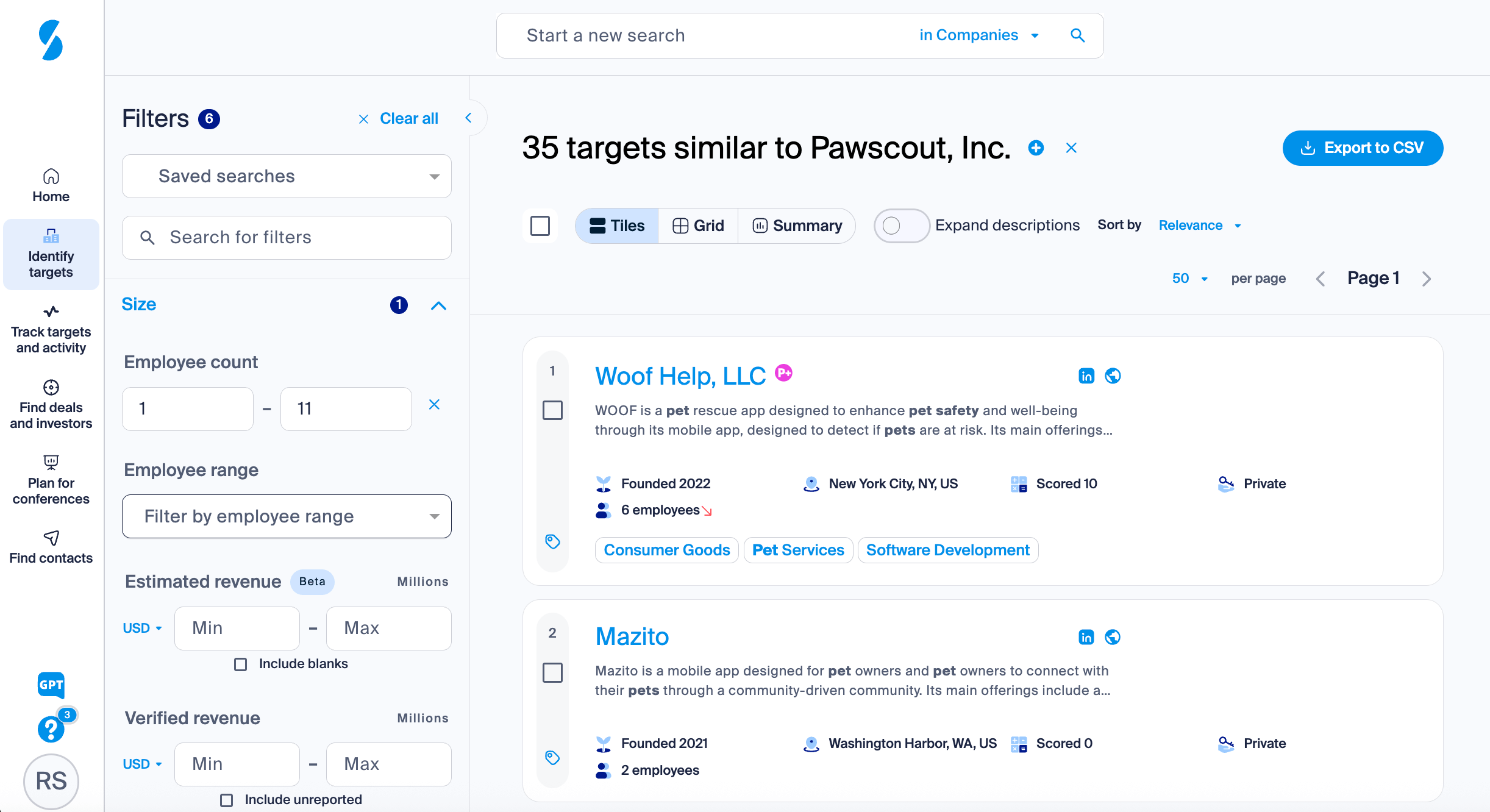
Although we’re looking for younger, smaller companies, it’s still important for these potential add-on acquisitions to be successful and growing. According to our research, 40% is considered a healthy growth rate for North American consumer electronics companies. We will set our minimum growth rate to 40%, which narrows our list to six promising add-on targets!
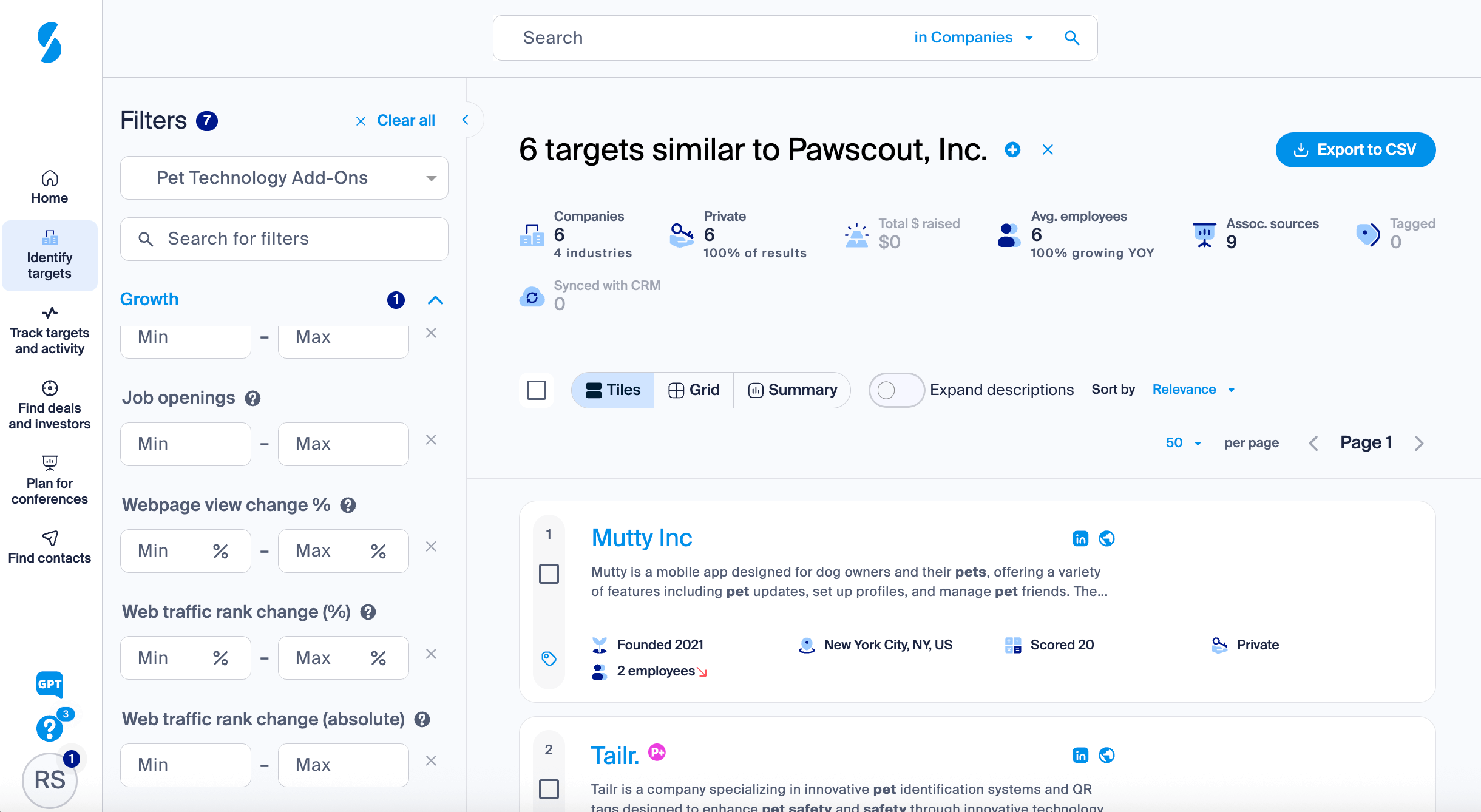
Pro Tip
Since pet tech is a rapidly growing space and add-ons can be early-stage, it’s helpful to continue to monitor the market for any new companies that meet your investment criteria. To do this, we save our list and ask that Sourcescrub notify us of any new matches every week.
It’s useful to monitor top add-on targets for signs of investment readiness, as well as important news that may give your firm an excuse to continue to reach out and build rapport. After saving our list in Sourcescrub, we simply click “Add Notification” to select the signals we would like to monitor, and choose how often we would like to receive these notifications.
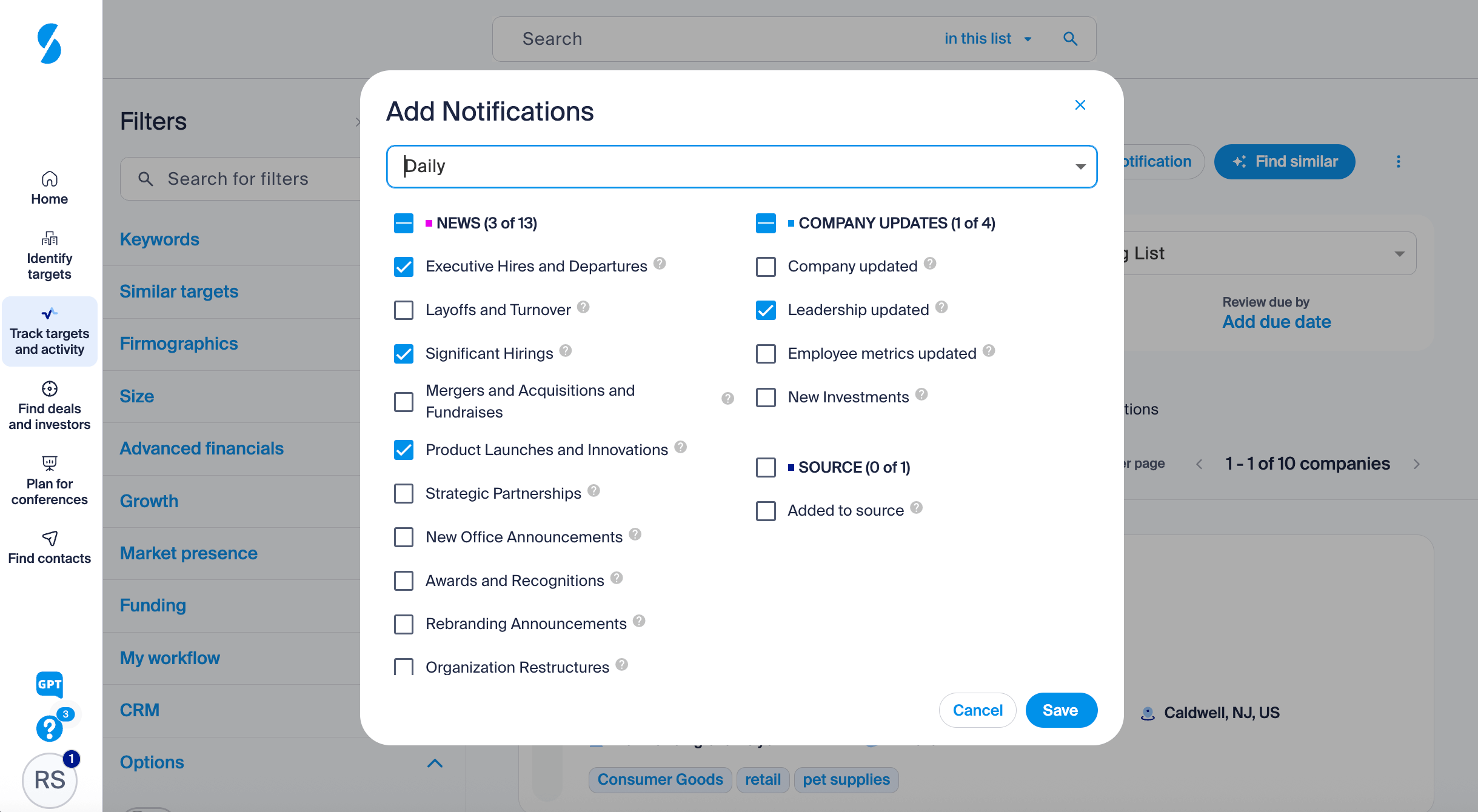
Now you have a clear understanding of how PE firms find add-ons. For more tips and techniques to research, find, and win the right add-on acquisitions, download this guide.